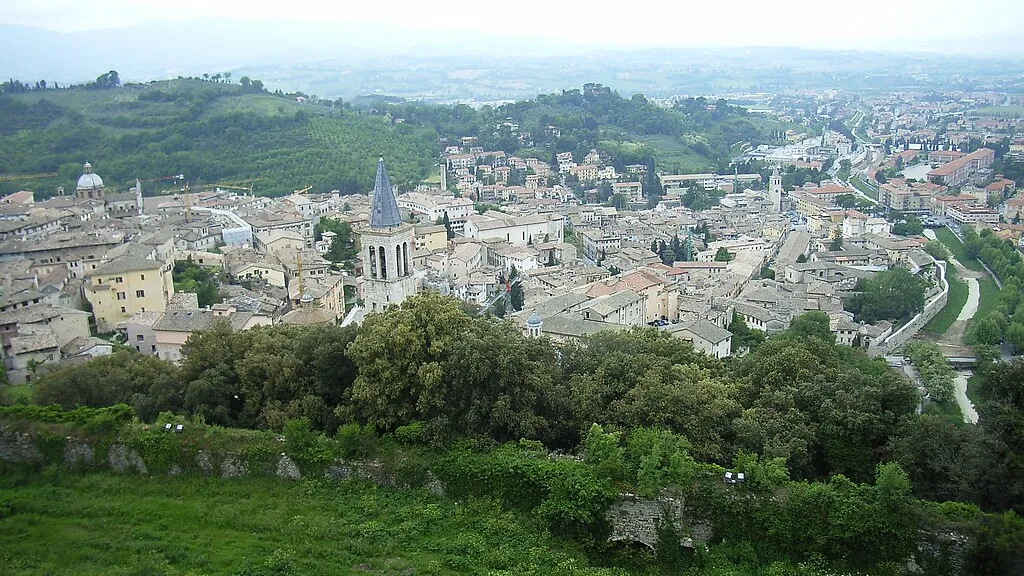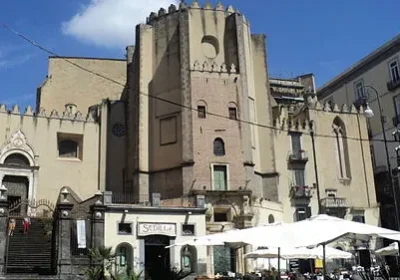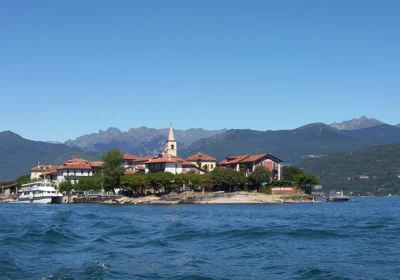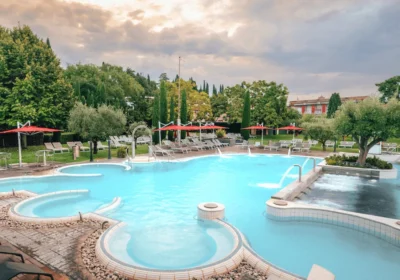Tour of Spoleto and the Cascade of Marmoré (waterfall).
This tour takes place by car.
The oldest city in central Italy, Spoleto definitely deserves the title of one of the jewels of the region. It is located 50 kilometres from Perugia and attracts with its rich history. In ancient times, it was home to a prosperous Roman colony. In the Middle Ages, Spoleto was the capital of the largest duchy in the Apennines. Today, what remains of its former glory is the magnificent Romanesque castle of Rocca, numerous churches and picturesque streets winding along the steep slopes of the Umbrian hills. It is better to get acquainted with Spoleto from the top of St Elias Hill. Here, at an altitude of 400 metres above sea level, is the fortress of Rocca. In 1359, Cardinal Albornoza ordered its erection at the highest point of the city for the papal residence. Until 1983, the building housed a prison. In the centre of the fortress surrounded by strong walls is a structure dividing the castle territory into two courtyards: the Court of Honour and the Armoury. The former houses the Museum of the Duchy of Spoleto, opened in 2007, while the latter houses a summer theatre for 1200 spectators. The courtyards are connected by a passage with frescoes from the late 16th century. On its vault is the coat of arms of Pope Gregory XIII, and on the walls are the coats of arms of 6 towns of the Papal Region.
When you reach the castle walls, you can enjoy a stunning view of the nearby hills and the valley of the river Tessino.
Between the hill with the castle and Mount Monteluco is another important landmark – the Tower Bridge. The main church of Spoleto is the Cathedral of the Ascension of the Virgin Mary in the north-east of the old town. Its top is composed of two tiers, the upper one with three round windows and three blind lancet arches with a mosaic with Jesus, Our Lady and St John in the middle. Inside, the 15th-century cathedral is decorated with frescoes by the famous artist of the same century, Fra Filippo Lippi, depicting the Acts of the Virgin Mary.
Spoleto’s Roman heritage is represented by the amphitheatre of the 1st century B.C. In antiquity, it was severely damaged by an earthquake, and then the structure was dismantled. The remains of the amphitheatre were discovered only in 1938. Today it has been restored and hosts various events. The orchestra pit still has a marble tile floor, and on the front stage there are holes where the curtain was once attached.
Transfer to the Cascata delle Marmore Cascade Marmore waterfall, about 40 minutes by car. It is a man-made historic waterfall. The total height of the cascade is about 165 metres and it consists of three stages, the highest one is about 70 metres high. The source of the waterfall is the Velino River, which falls from a cliff near the municipality of Marmore
It is possible to organise lunch in a panoramic restaurant near the waterfall. You can also walk behind the waterfall all the way to the top, from where the Velino River falls to the Nehru.

















